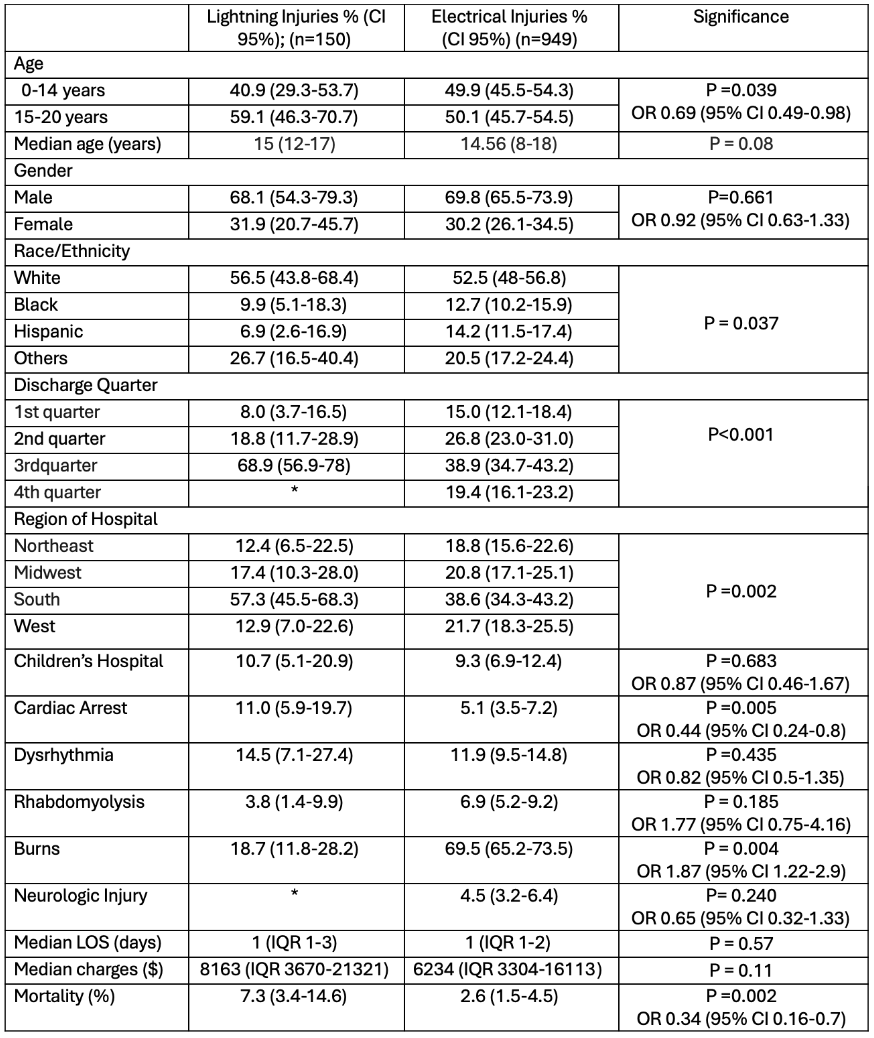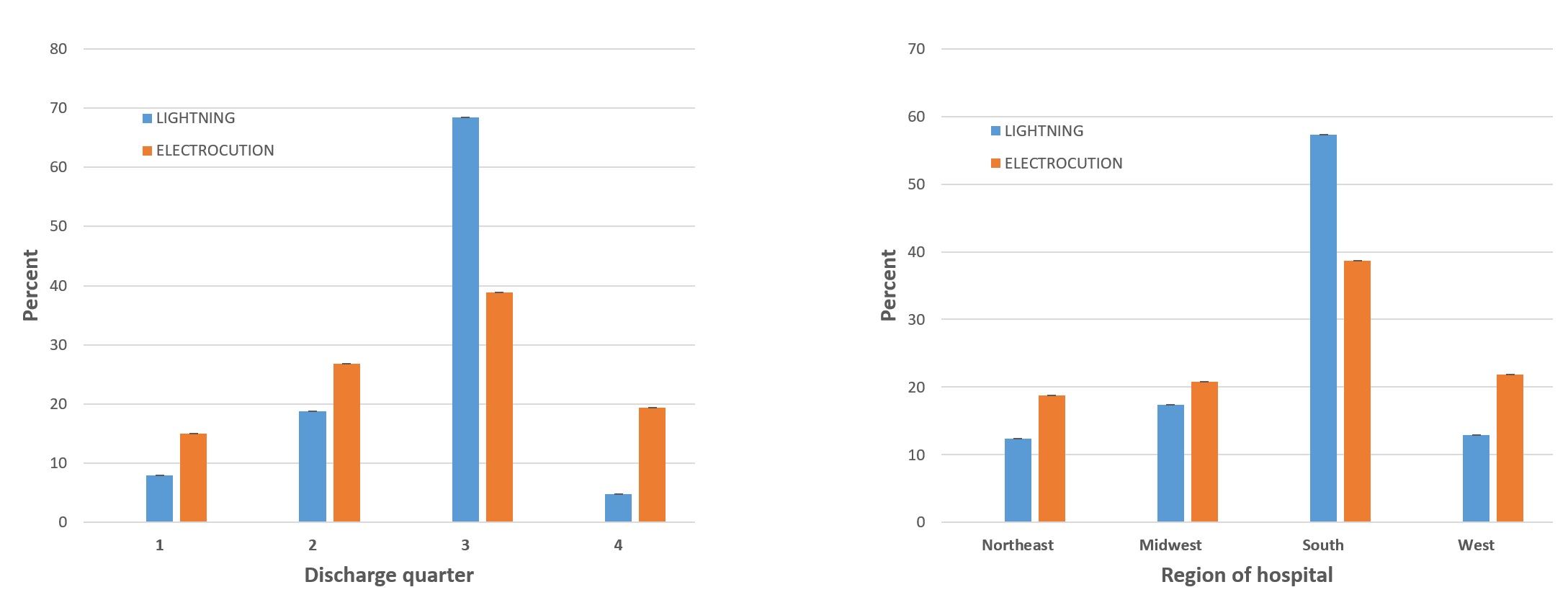Critical Care 2
Session: Critical Care 2
125 - Hospitalization with Lightning and Electrical Injuries in Children in the United States from 1997 to 2019
Friday, April 25, 2025
5:30pm - 7:45pm HST
Publication Number: 125.5258
Anushree Malhotra-Hans, Nicklaus Children’s Hospital, Miami, FL, United States; Patricio E. Lau, Nicklaus Children’s Hospital, miami, FL, United States; Balagangadhar R. Totapally, Nicklaus Children’s Hospital, Miami, FL, United States

Anushree Malhotra-Hans, MD (she/her/hers)
Pediatric Critical Care Fellow
Nicklaus Children’s Hospital
Miami, Florida, United States
Presenting Author(s)
Background: Injuries from lightning and electricity are uncommon but are associated with high morbidity and mortality in children.
Objective: To describe the prevalence of hospitalizations associated with lightning and electrical injuries in children in the U.S. and compare demographic characteristics, complications, and mortality rates between lightning and electric injuries using a national discharge database.
Design/Methods: A retrospective serial cross-sectional analysis of hospitalized patients aged < 20 years from 1997-2019 was performed using the Kids Inpatient Database (KID). KID data is available every three years. ICD 9 and 10 codes were used to identify patients admitted with lightning and electrical injuries and their associated complications. Hospital charges were adjusted to the 2019 inflation level. All neurologic symptoms or complications were combined into one variable. Chi-square and Mann-Whitney U tests were used to compare variables between all discharges vs lightning or electrical injuries and between children with lightning vs electrical injuries.
Results: Out of 27,460,421 non-neonatal discharges, 150 children with lightning injuries and 949 children with electrical injuries were hospitalized during the study period, with a prevalence of 5.4 and 34.5 per million hospitalized patients and 2.2 and 14.1 per 10 million U.S. population, respectively. The demographic characteristics, complications, and outcomes and their comparisons are presented in Tables 1 and 2. Lightning and electrical injuries occurred mostly in children aged 15-20 years and males. Lightning injuries were more common in 3rd quarter and in the South compared to electrical injuries (Figure). More children were admitted following cardiac arrest with lightning compared to electrical injuries (11% vs 5.1%; p=0.005). Neurologic complications were present in 4.8% of all patients. The prevalence of dysrhythmias, rhabdomyolysis, and neurologic complications was similar with both types of injuries. Skin burns were significantly higher with electrical injuries than with lightning (69.5% vs 18.7%; p=0.004). The median length of stay and inflation-adjusted charges were similar with both types of injuries. The mortality rate was significantly higher with lightning injuries compared to electrical injuries (7.3% vs 2.6%; p=0.002).
Conclusion(s): Lightning and electrical injuries are rare in the pediatric population but are associated with a high risk of mortality. This study describes the prevalence, epidemiology, and comparison of lightning and electrical injuries requiring hospitalization of pediatric patients in the United States over 20 years.
Comparison of demographic characteristics of hospitalizations of children with lightning injuries and electrical injuries with all other discharges during 1997-2019 in the United States.
.png) *Values <11 are not presented as per HCUP guidelines.
*Values <11 are not presented as per HCUP guidelines. Comparison of demographic characteristics of hospitalizations of children with lightning injuries with electrical injuries during 1997-2019 in the United States.
 For categorical variables, data is presented as % and 95% CI; for continuous variables, the data is presented as median and IQR. *Values <11 are not presented as per HCUP guidelines.
For categorical variables, data is presented as % and 95% CI; for continuous variables, the data is presented as median and IQR. *Values <11 are not presented as per HCUP guidelines.Figure 1. Regional and Quarterly distribution of Hospitalized Children with Lightning and Electrical Injuries during 1997-2019 in the United States.


